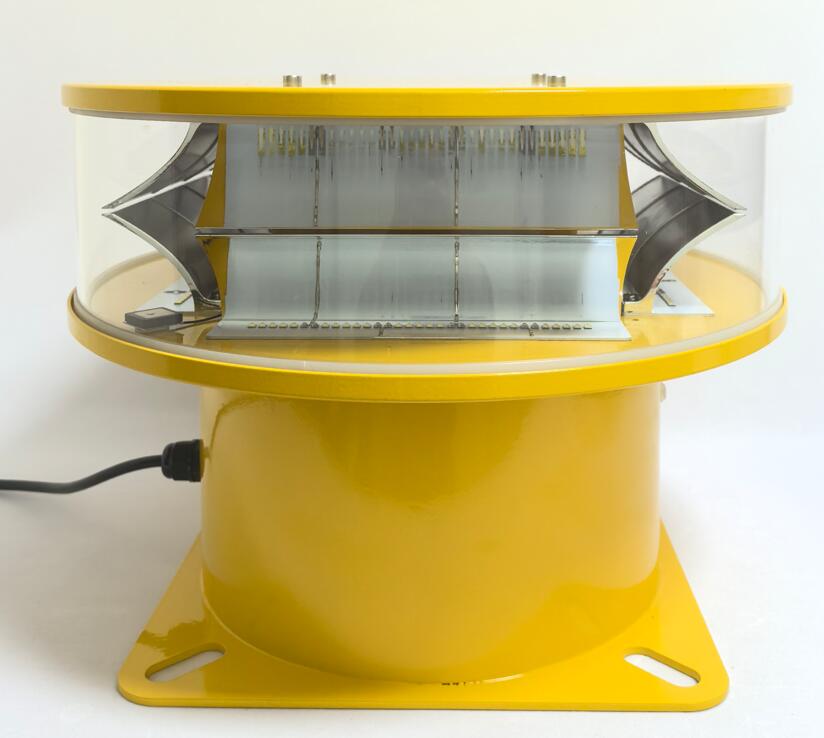LED Aircraft Warning Lights: Revolutionizing Aviation Safety with Modern Technology
Introduction: The New Standard in Obstruction Lighting
In today's increasingly crowded airspace, LED aircraft warning lights have become the gold standard for marking tall structures and preventing mid-air collisions. These advanced lighting systems combine superior visibility with exceptional energy efficiency, offering reliable performance that far surpasses traditional incandescent solutions. As aviation authorities worldwide update their regulations, LED aircraft warning lights are now mandatory for most new installations, representing a significant technological leap in aerial safety.
Why LED Technology Dominates Modern Warning Systems
Unmatched Performance Advantages
50,000+ hour lifespan (versus 1,000-2,000 hours for incandescent)
80% energy reduction compared to conventional lights
Instant on/off capability with no warm-up period

Superior visibility with precise light color and intensity
Enhanced Safety Features
Consistent luminosity throughout lifespan
No sudden burnouts - gradual dimming alerts for maintenance
Operational in extreme temperatures (-40°C to +70°C)
| led aircraft warning lights |
Vibration and impact resistant for harsh environments
Critical Applications Across Aviation Infrastructure
1. Communication Towers
Medium-intensity red LEDs for nighttime marking
High-intensity white strobes for daytime visibility
| led aircraft warning light |
Dual lighting systems for tallest structures
2. Wind Turbine Arrays
Specially designed low-glare LED configurations
Synchronized flash patterns across wind farms
Ice-resistant housings for cold climates
3. Urban High-Rise Buildings
Architecturally integrated lighting solutions
Automated dimming for light pollution control
Customizable flash patterns for landmark identification
4. Offshore Structures
Corrosion-proof marine-grade LED units
Solar-powered options for remote platforms
Submersible designs for oil rig applications
Technical Specifications and Compliance Standards
Global Regulatory Requirements
ICAO Annex 14 intensity and color standards
FAA AC 70/7460-1L flash pattern specifications
EASA CS-ADR-DSN European compliance
CASA MOS 139 Australian regulations
Key Performance Metrics
Luminous intensity: 2,000-20,000 candela
Flash rate: 20-60 flashes per minute
Beam divergence: 3°-10° vertical spread
Color chromaticity: Precise red/white specifications
Smart Features of Next-Generation LED Systems
1. Intelligent Light Control
Automatic brightness adjustment based on ambient light
Weather-responsive intensity boosting
Remote monitoring and configuration
2. Advanced Diagnostics
Real-time performance tracking
Predictive failure alerts
Maintenance scheduling automation
3. Sustainable Operation
Solar-hybrid power options
Energy harvesting technology
Recyclable component designs
Installation and Maintenance Best Practices
Optimal Placement Strategies
Top-mounted primary light units
Intermediate level spacing for tall structures
Clearance from potential light obstructions
Simplified Maintenance Protocols
Tool-free access for lamp replacement
| LED Aircraft Warning Lights |
Modular component design
Plug-and-play connectivity
Long-Term Reliability Factors
Annual photometric testing
Biannual cleaning regimen
5-year comprehensive inspections
The Future of LED Warning Light Technology
1. Drone-Specific Applications
ADS-B integrated warning systems
UAV-visible light frequencies
Dynamic anti-collision patterns
2. Smart City Integration
Networked lighting control systems
Air traffic coordination interfaces
Automated NOTAM generation
3. Advanced Materials
Self-cleaning nano-coatings
Graphene-enhanced heat dissipation
Flexible LED matrix designs
Lighting the Way to Safer Skies
LED aircraft warning lights represent more than just an upgrade to traditional lighting - they constitute a fundamental transformation in how we protect both air traffic and ground structures. With their unparalleled reliability, energy efficiency, and smart capabilities, these systems are setting new benchmarks in aviation safety infrastructure.
As urban landscapes continue growing vertically and airspace becomes increasingly congested, the role of LED aircraft warning lights will only grow more vital. For tower operators, architects, and aviation authorities, adopting these advanced systems isn't just about compliance - it's about committing to the highest possible standards of safety in our three-dimensional transportation networks.
The ongoing evolution of LED technology promises even greater advances in the coming years, ensuring that LED aircraft warning lights will remain at the forefront of collision prevention systems for decades to come. In an era where every flight counts, these luminous sentinels stand guard, making the skies safer one flash at a time.
